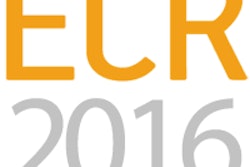Cloud-based image sharing improves care at breast centers while also reducing costs, according to a presentation on Tuesday at this week's National Consortium of Breast Centers (NCBC) annual conference in Las Vegas.
In an era of healthcare reform, providing quality and cost-effective patient care is crucial if healthcare facilities are to thrive. However, traditional methods for sharing imaging files and reports -- such as CDs and virtual private networks (VPNs) -- can slow the delivery of care for breast cancer patients, said presenter Denise Shafer, an application analyst for Good Samaritan Hospital in Vincennes, IN.
"Until recently, care was sometimes delayed for several days because patients would arrive at Good Samaritan's breast center without the necessary imaging files," Shafer said. "The time and effort to retrieve the studies slowed clinicians' work and was frequently frustrating and expensive," Shafer said.
Good Samaritan is a 232-bed community hospital. Its imaging center has two 64-slice CT scanners, and its Cancer Pavilion is a 25,000-sq-ft oncology care center, Shafer said. The hospital's Breast Care Center features a breast-specific gamma imaging (BSGI) unit for following up inconclusive mammograms.
To make image sharing more efficient, the hospital adopted a cloud-based information exchange service so that files and reports arrive within minutes and patients can be seen the same day, Shafer said. The files are of diagnostic-level resolution and arrive with DICOM headers so they can easily be associated with other patient information on a PACS.
"The cloud service costs far less than receiving studies on CDs or via virtual private network, is significantly more reliable than the CDs, and does not require dedicated IT support and maintenance as a VPN," she said.
Shafer outlined the problems that cropped up at Good Samaritan when the hospital was file sharing with CDs, such as delayed diagnosis and treatment of abnormal mammograms, high costs, unpredictable reliability -- and an aging CD burner. VPNs also have their share of flaws, she said, including the following:
- Using a VPN requires a high level of network security knowledge.
- Smaller hospitals may not have sufficient IT resources.
- Security requires password and data encryption.
- VPNs don't work with equipment from different manufacturers.
- A VPN connection contributes to total network traffic, which can slow operations.
- There is high cost and labor time for maintenance.
- Allowing access from personal computers carries a security risk.
Cloud-based image sharing, in contrast, requires no extra hardware or software, is accessible and vendor-neutral, is easily managed by an administrator, and includes a Flash-based viewer and a secure encryption protocol, Shafer said.
"Some of the advantages of image sharing via the cloud are that patient care is more efficient, especially in emergencies -- and we have enhanced medical information exchange with our healthcare community," she said. "And the files come with DICOM headers, which makes it easy to integrate them with patient information in the PACS."
Cloud-based image sharing also allows Good Samaritan administrators to gather valuable quality data, according to Shafer.
"The cloud enables us to create customer reports that define the number of patients per ZIP codes to whom we provide services," she said. "We also track demographically where we have the most and least amount of patients using our services and identify the small, rural hospitals that refer to us for diagnostic mammograms and procedures."
Is cloud-based image sharing the wave of the future? Yes, Shafer said.
"[We look forward to the day] when all hospitals use a cloud-based service for imaging file exchange," she concluded.




















